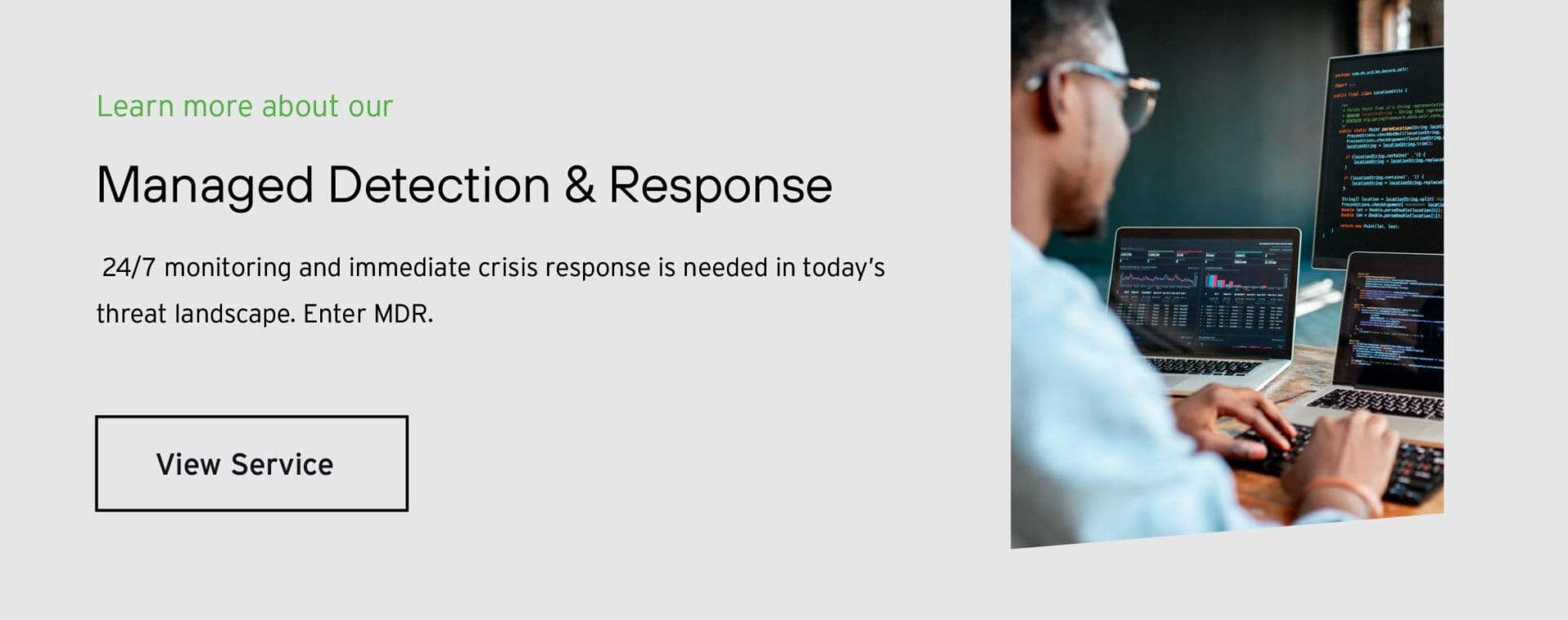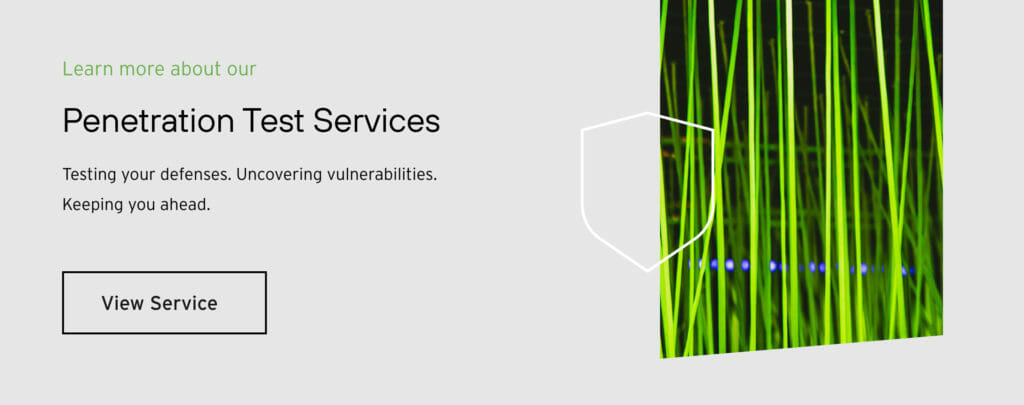Attention SMBs: Be Proactive in Outsourcing your Cybersecurity Needs
For small to mid-size businesses (SMBs), knowing what you need to remain secure and setting a resilient plan in place is half the battle.
- With the average cost of a security breach nearing $4 million, organizations need to detect threats early.
- Threat monitoring, detection and response (MDR) services offer businesses a turnkey security response.
- Combined with penetration testing and endpoint device monitoring, MDR services reduce threat detection and response times.
- Companies need to measure their potential exposure to crippling ransomware, phishing, and data theft.
- By outsourcing industry-standard cybersecurity services, SMBs gain protection from common threats and business disruption.
With data theft and cyber-attacks ramping up exponentially since the onset of the pandemic, it’s crucial for small businesses (SMBs) to safeguard against the growing threat. Even a small breach can be detrimental financially as a business spends time and money to investigate and resolve the issue.
The cybersecurity arena offers a slew of potentially beneficial services, but weeding through the often-confusing options can prove cumbersome for businesses unequipped to understand the developing technology.
Despite this, SMBs without a sizeable IT department should consider outsourcing cybersecurity technology, in addition to securing cyber insurance coverage to ensure adequate protection from losses associated with a cyber-attack, should one occur.
The most common cyber threats facing SMBs today are ransomware, phishing, and data theft.
The U.S. Small Business Administration defines ransomware as a “specific type of malware that infects and restricts access to a computer until a ransom is paid.”
In commercial scenarios, ransomware is typically delivered through phishing in emails designed to fool employees in order to exploit a business’s software vulnerabilities. Often containing a link or an attachment carrying a malicious code that once clicked or opened by an employee triggers the program to run, infecting a business’ software with malware. Typically, the goal is to either shut down business operations and/or collect sensitive information. Either way, the resulting damage will likely be significant.
When it comes to protecting SMBs from a cyber-attack, the best way to reduce costs is by detecting threats early.
Current cybersecurity services to consider include MDR, EDR and pentesting. In most cases, these services require a professional service provider to perform them.
Threat Monitoring, Detection and Response (MDR)
Threat monitoring, detection and response (MDR) services offer businesses turnkey security operations center (SOC) capabilities remotely to quickly detect, analyze, investigate, and respond to threats either through containment or disruption. Data is logged and analyzed by skilled cybersecurity experts in incident detection and response services that are available 24/7.
MDR services are designed to reduce the time to detect, as well as the time to respond to cyber threats through the use of a number of cybersecurity tools.
SMBs interested in MDR will work with a service provider to determine specific security goals and results desired.
Endpoint Detection and Response (EDR)
Endpoint security is the practice of safeguarding data and workflows associated with individual devices that connect to a business’ network. Endpoint protection platforms, such as EDR, examine files as they enter a network.
A factor driving the rise in EDR adoption is the rise in the number of endpoints attached to networks. Another major driver is the increased sophistication of cyberattacks, which often focus on endpoints as easier targets for infiltrating a network.
Small businesses may have hundreds of endpoints, such as desktops, servers, laptops, tablets, smartphones, and even internet of things (IoT) devices. Each unprotected endpoint holds the potential for a cyber-attack.
EDR offers the ability to detect and monitor suspicious activities on host and endpoints to monitor and collect data that could indicate a threat. The data is analyzed to pinpoint threat patterns and automatically respond to identified threats to remove or contain them and notify security personnel.
This type of security technology allows designated individuals to control security — through application control and encryption — for each device remotely through a centralized console. The software can be delivered as a SaaS and managed remotely or installed directly on each device. By controlling data loss and through continuous monitoring, EDR offers SMBs with a significant number of endpoints a substantial solution to combat cyber-attacks.
Penetration Testing
Penetration testing or “pentesting” is a security assessment tool that utilizes simulated attacks to search for network system vulnerabilities. It’s essentially a stress test to evaluate cybersecurity services and products already in place. Pentesting is invaluable because each scenario is customized to meet an individual business’ cybersecurity needs. Testing can be done internally and externally and focus on a specific area, like wireless applications or social engineering.
There are three types of pentesting: white box, gray box, and black box.
In white box testing, the tester is given information about the system or network to be breached. It is the most time-consuming and therefore the most comprehensive of the three types.
Gray box pentesters have some knowledge of a business’ network, but not as much as in white box testing. In this case, the testing can be focused on areas of potential risk for data loss.
Black box pentesting is the least comprehensive of the three types. In this simulation, the tester has no insider knowledge of the network system that it will attempt to breach. The problem with black box testing is that if a simulated breach is unsuccessful, there is no indication of whether internal network weaknesses exist.
At completion, a comprehensive report is provided the business highlighting vulnerabilities, risks posed, and outlining information security solutions.
____
SMBs choosing to arm themselves with these latest cybersecurity services will be safeguarding not only their intellectual property and other financial assets, but also their brand reputation in the event of an attack.
Ready to take the next steps on your cybersecurity?
Call us today at 774.204.0700 or email us at info@towerwall.com to discuss your security needs.




